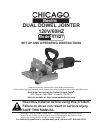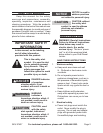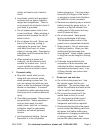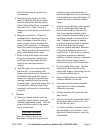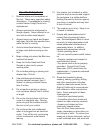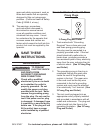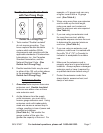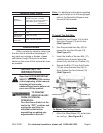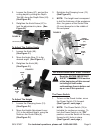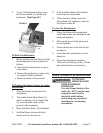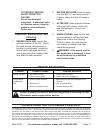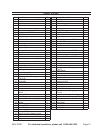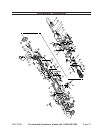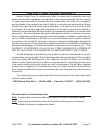
Page 5SKU 97427 For technical questions, please call 1-800-444-3353.
Specic Safety Rules
Maintain labels and nameplates on 1.
the tool. These carry important safety
information. If unreadable or missing,
contact Harbor Freight Tools for a
replacement.
Always examine the workpiece for 2.
foreign objects. Never attempt to cut
into nails or other metal objects.
Always keep your hands and ngers 3.
well away from the chip ejection area
while the tool is running.
Avoid unintentional starting. Prepare 4.
to begin work before turning on the
tool.
Begin cutting only when the Bits have 5.
reached full speed.
Keep the Cutter Head and Drive 6.
Guards in place and in proper
working order.
Do not make jointing or planing cuts 7.
deeper than 1/8 inch.
Use hold-down/push blocks for 8.
jointing material narrower than 3
inches, or planing material thinner
than 3 inches.
Do not perform jointing or planing 9.
cuts on pieces shorter than 8 inches
in length.
Do not lay the tool down until it has 10.
come to a complete stop. Moving
parts can grab the surface and pull
the tool out of your control.
Do not leave the tool unattended 11.
when it is plugged into an electrical
outlet. Turn off the tool, and unplug
it from its electrical outlet before
leaving.
Use clamps (not included) or other 12.
practical ways to secure and support
the workpiece to a stable platform.
Holding the work by hand or against
your body is unstable and may lead
to loss of control.
This product is not a toy. Keep it out 13.
of reach of children.
People with pacemakers should 14.
consult their physician(s) before
use. Electromagnetic elds in close
proximity to heart pacemaker could
cause pacemaker interference or
pacemaker failure. In addition,
people with pacemakers should:
• Avoid operating alone.
• Do not use with power switch locked
on.
• Properly maintain and inspect to
avoid electrical shock.
• Any power cord must be properly
grounded. Ground Fault Circuit
Interrupter (GFCI) should also be
implemented – it prevents sustained
electrical shock.
Some dust created by power 15.
sanding, sawing, grinding, drilling,
and other construction activities,
contains chemicals known [to the
State of California] to cause cancer,
birth defects or other reproductive
harm. Some examples of these
chemicals are:
• Lead from lead-based paints
• Crystalline silica from bricks and
cement or other masonry products
• Arsenic and chromium from
chemically treated lumber
Your risk from these exposures
varies, depending on how often you
do this type of work. To reduce your
exposure to these chemicals: work in
a well ventilated area, and work with



